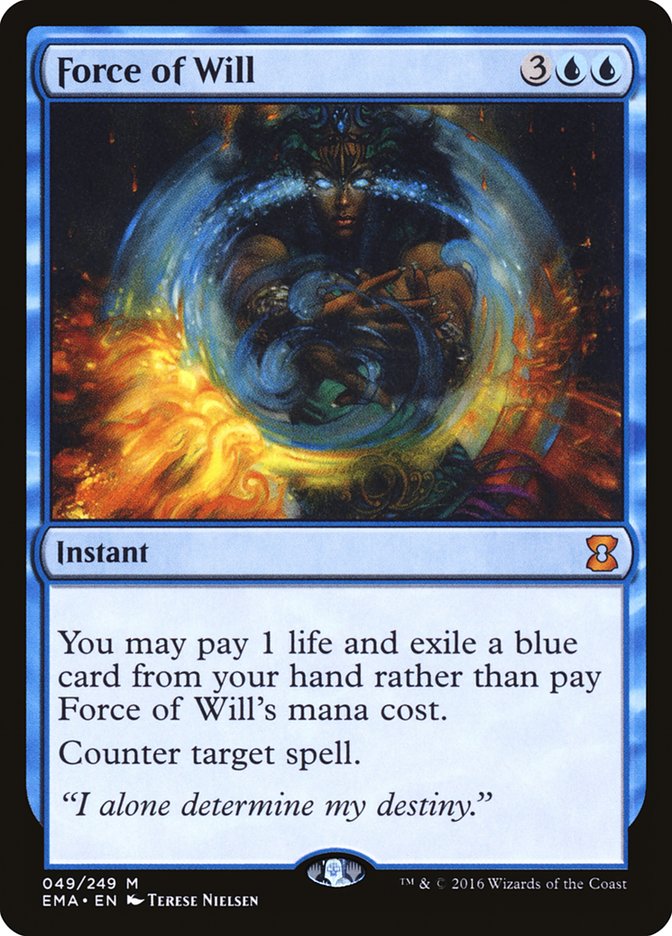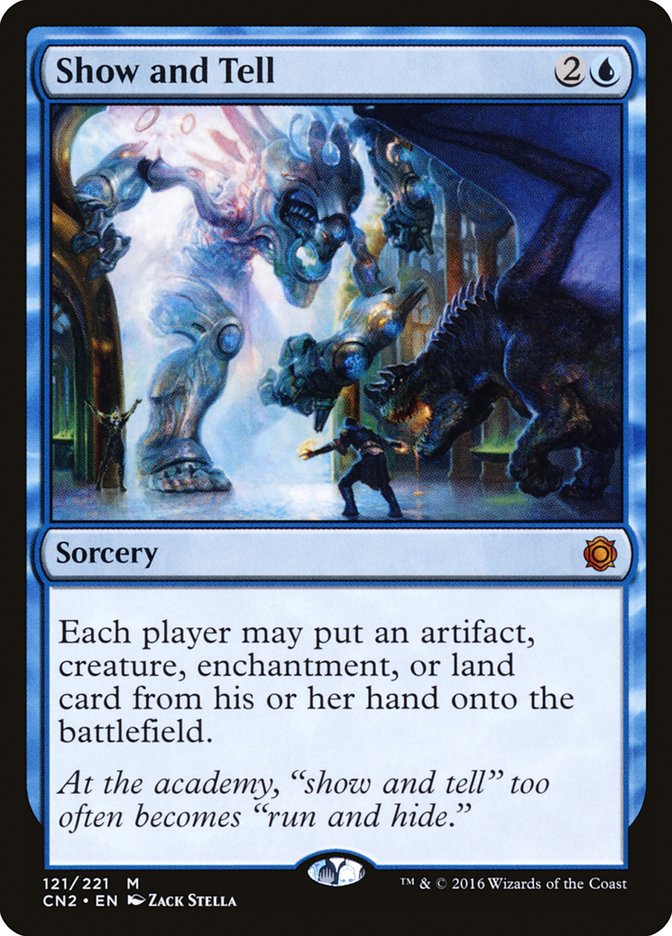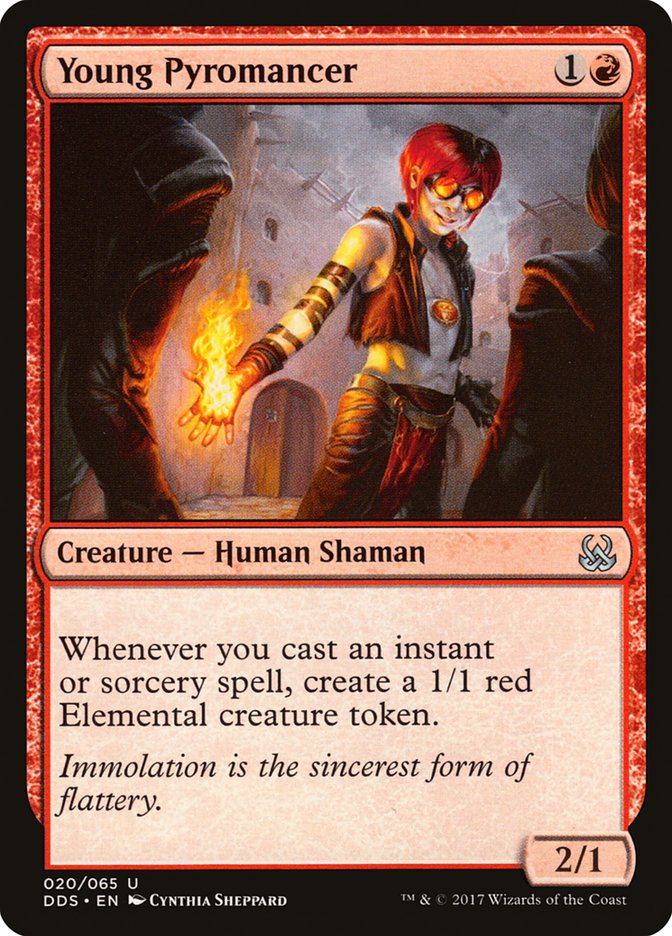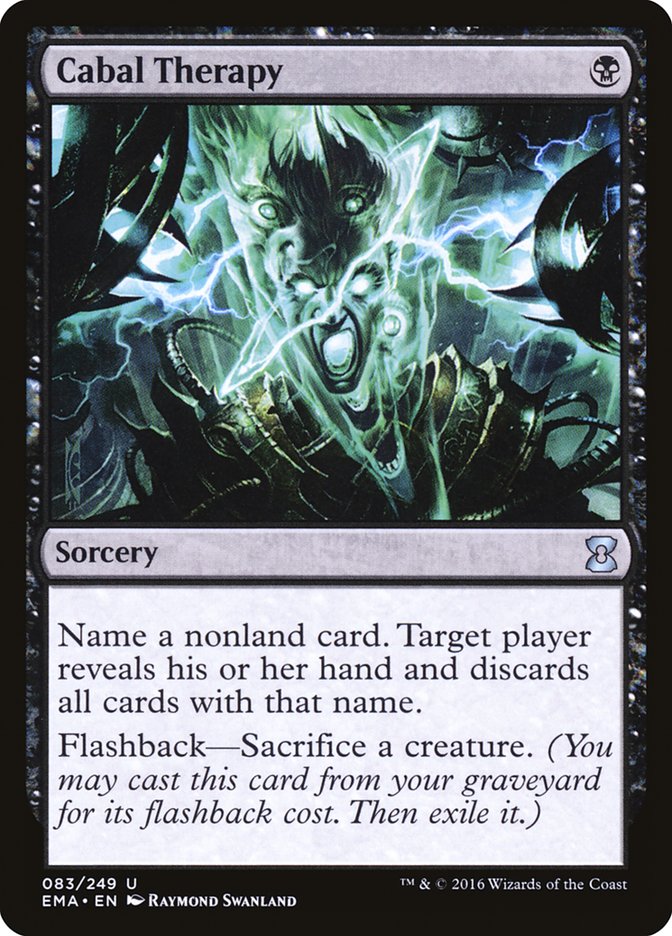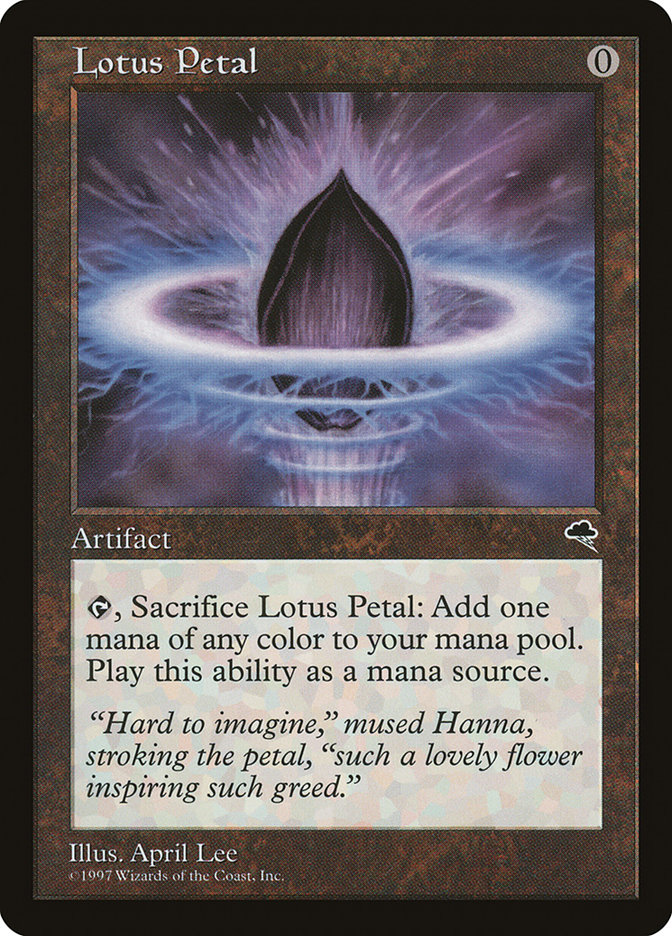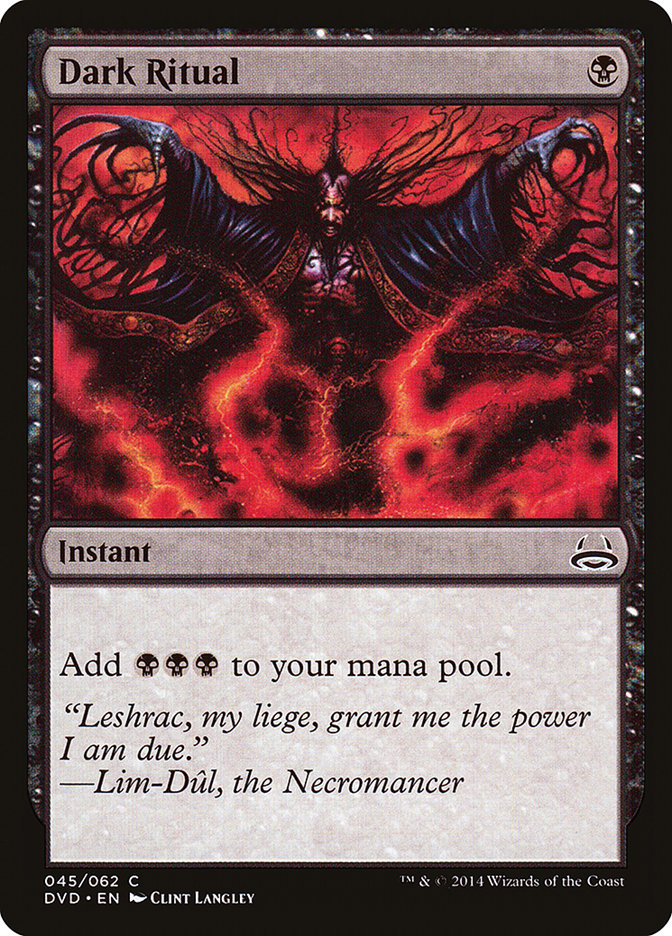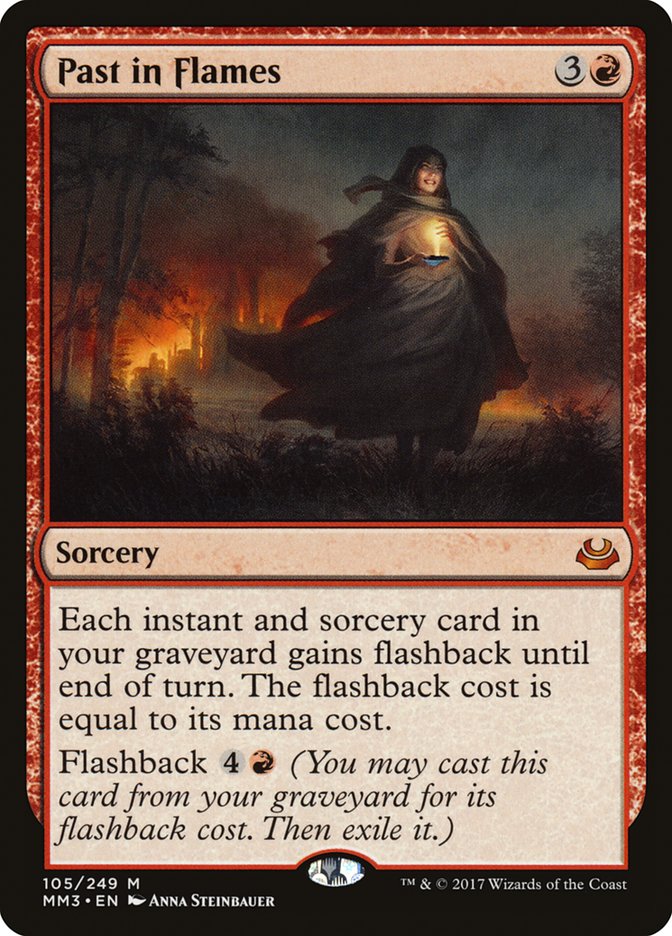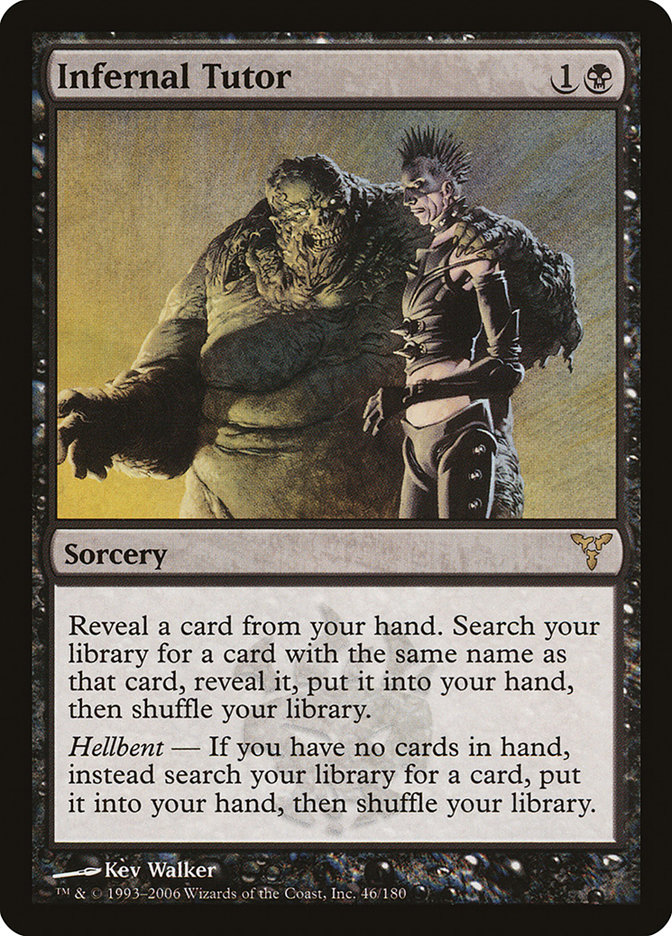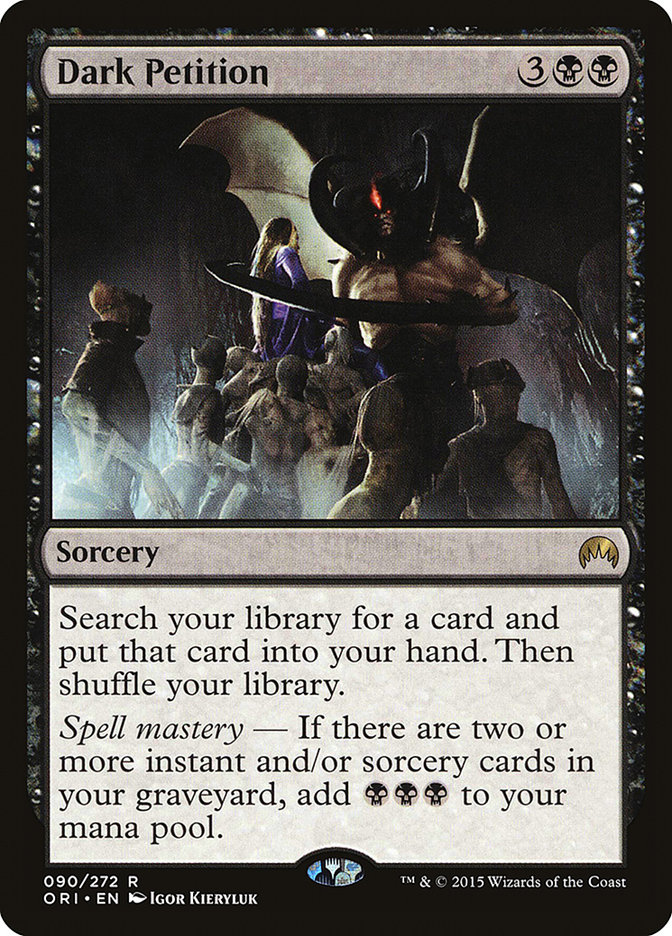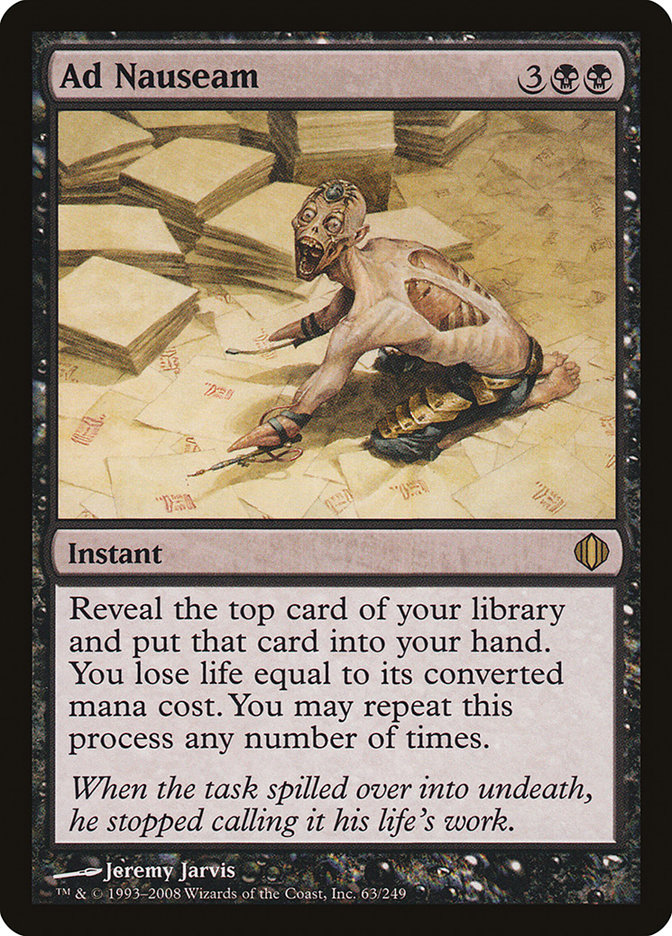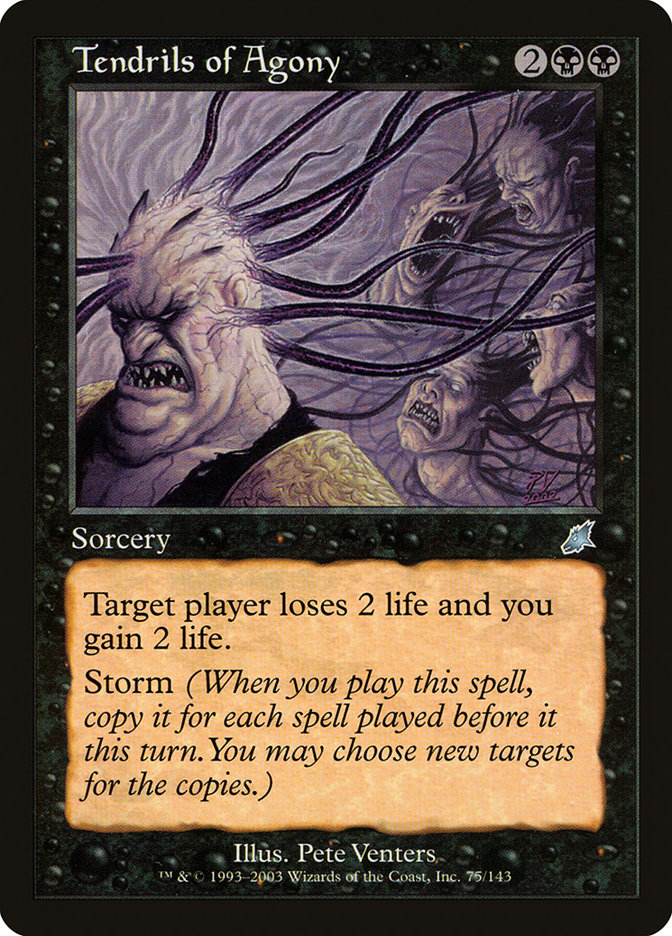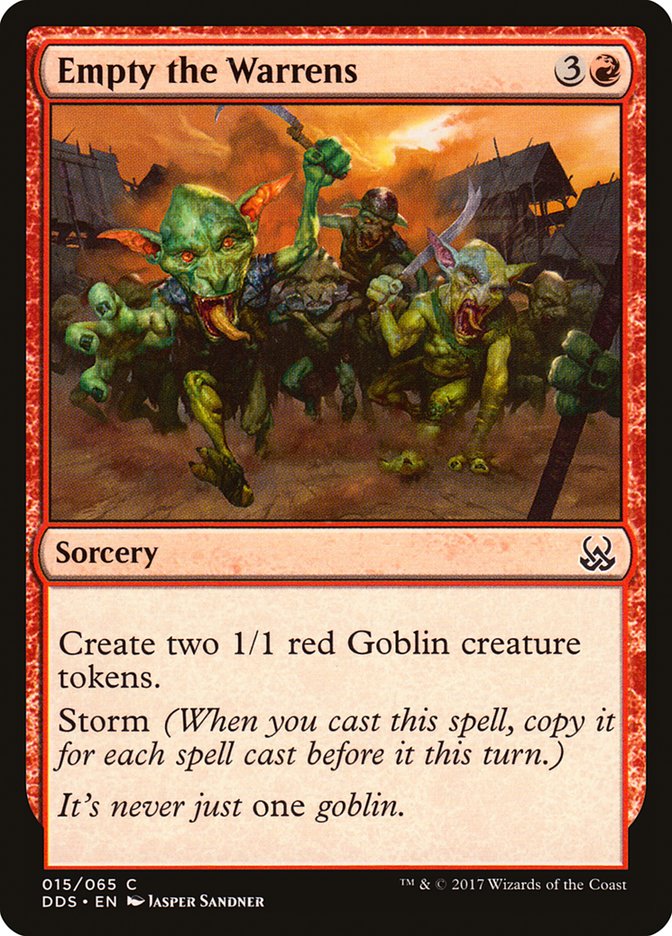I’ve always been attracted to combo decks.
While I appreciate the strategic and tactical differences between aggro, midrange, and control, they all operate more or less on the same axis, and with the increased prominence of creatures over the last decade, the lines between them have blurred.
So Why Combo?
Combo decks often operate on a fundamentally different axis, which is why to some people they can often feel as though the pilot isn’t playing the same game. For some that is a nuisance, but I’ve always found it interesting.
I think the frustration often arises from a feeling of helplessness when someone’s deck isn’t properly equipped to disrupt an opposing combo deck or their draw didn’t come together in time. No one likes to feel like there’s nothing they could’ve done and so non-interactive decks take some flak for engendering those feelings within their victims.
Creatures (6)
Lands (17)
Spells (37)
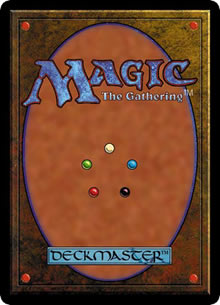
But combo decks don’t seek to eliminate all interaction, or at least the vast majority of them don’t. What they do is significantly narrow the range of interaction that is relevant. The most common way they do so is by being creatureless and thus blanking removal, but every successful combo deck makes some of the popular disruption in the metagame irrelevant.
On the surface, this effect would simplify the decision trees that combo pilots have to make, and in some games they do. When you see their hand has a bunch of irrelevant cards, you can execute the combo at your leisure, and regardless of what relevant disruption your opponent has, your gameplan remains unchanged.
But your opponent is working with that same knowledge, which is where things can get awkward and combo pilots need to get creative.
New Combo
When your opponent is familiar with the inner workings of your deck, it becomes easier for them to disrupt it, and utilizing that information well is critical to winning with combo and winning against it.
For combo decks like Sneak and Show that rely on assembling a set number of specific pieces together, it’s harder to gain an advantage on this axis. However, it’s not impossible. The best Sneak and Show players will run out a superfluous Show and Tell without anything to cheat onto the battlefield in hand simply to bait a counterspell if they know they don’t have much time to work with and need to utilize their mana every turn.
Still, the variety in combo execution is why I’ve tended to favor engine-based combo decks over those like Sneak and Show. Storm and Elves are both examples of such combo decks, so it’s no surprise that I’ve played both for long periods of time.
Creatures (33)
- 4 Llanowar Elves
- 1 Elvish Champion
- 1 Eternal Witness
- 4 Heritage Druid
- 4 Nettle Sentinel
- 3 Elvish Visionary
- 4 Elvish Archdruid
- 3 Ezuri, Renegade Leader
- 1 Phyrexian Revoker
- 1 Spellskite
- 4 Elvish Mystic
- 1 Reclamation Sage
- 1 Dwynen's Elite
- 1 Selfless Spirit
Lands (19)
Spells (8)

Both decks can win in a variety of different ways and you often need to utilize whatever hidden information you have to goad your opponent into using their disruption on spells that don’t matter.
To demonstrate this in action, I want to go over an interesting turn I had last weekend at #SCGDC, in my Round 10 feature match against Brad Carpenter. The video for that match can be found here, timestamped to the beginning of the critical turn. You can also scroll to 56:12 in the video below.
The Turn
A little background: I had spent much of the game with lots of mana cards in my hand, digging for an Infernal Tutor or other suitable payoff. I had a Cabal Therapy ready to strip Brad’s Force of Will, which I saw from a previous discard spell, and I wasn’t under much pressure, so all in all I felt good about my chances.
Lands (15)
Spells (45)

However, on his previous turn Brad drew Young Pyromancer and Pondered into a Cabal Therapy, thus generating two Elemental tokens and stripping me of my Lion’s Eye Diamond and Cabal Therapy. I now have no access to red mana and no way to answer Brad’s Force of Will and I only have three turns to assemble a kill.
So now I’m in a bad spot. After drawing a Brainstorm that was left on top from a Ponder on the previous turn, I cast my Gitaxian Probe drawing a Lotus Petal I also knew about. I then cast my Brainstorm, hoping for a small miracle.
The first small miracle is that the Brainstorm will even resolve. Brad has near-perfect information, and the extra Elemental could speed up his clock by a full turn. Fortunately, the fear of what that unknown card from the Gitaxian Probe could be (Ad Nauseam would be the nightmare) is enough to let me check out three fresh cards.
The Brainstorm gives me a second Lotus Petal, another Gitaxian Probe, and most importantly an Empty the Warrens, which is not only a win condition but it’s the one win condition that is best at winning through a counterspell. A second Gitaxian Probe can also increase the storm count to a high number, since my Goblin tokens are entering a battlefield already populated by a Young Pyromancer. This Brainstorm is about as good as I could’ve hoped for.
I’m going to have access to all but one card after that second Gitaxian Probe, so the question I have to answer is which one is the least useful. My hand mid-Brainstorm resolving was the following:
For the sake of completeness, my life total is fifteen and Brad’s life total is sixteen. He has no untapped mana with a hand of Brainstorm and Force of Will. I have a Swamp and an Underground Sea untapped.
There are only three choices of cards I can put second from the top and still get to Empty this turn and those are:
The first thing to check is if I have a line that can cast Empty the Warrens no matter what the Force of Will targets. If I throw away a Lotus Petal, then that creates a choke point on red mana. However, if I throw away a Ritual and Brad counters the other, I’m going to be short of four mana to cast the Empty. No matter which decision I make, Brad can break up my turn.
Which brings us to the more interesting question: which card is Brad most likely to let resolve?
The key principle to keep in mind when answering this question is that each card you cast reveals more information about your hand. As a result, the early spells in the chain are most likely to resolve because there’s a lot of uncertainty still surrounding where the choke point is and it’s exceedingly hard to think through all the possible combinations of remaining cards I could have. In this case I’m going to lead with the Dark Ritual, since it’s the least committal and it’s something Brad already knows about, so I believe it’s the most likely spell to resolve.
Brad’s prior information also makes the Dark Ritual easier to get through. Brad has already seen a Cabal Ritual that could follow it up if he uses his Force of Will too early, potentially leading to an Ad Nauseam or lethal natural Tendrils. Dark Ritual would be the fourth spell of the turn, so if my last three cards are Dark Ritual or Lotus Petal, Cabal Ritual, and Tendrils of Agony, then casting the Force of Will makes it lethal. I’m not going to pretend like I thought through all of these lines at the time, but these are the kinds of things that people are fearful of when playing against Storm, and having an intuition for that fear is what is important.
In contrast to Dark Ritual, Lotus Petal looks like a more attractive thing to counter, precisely because it could prevent an Empty the Warrens, the card which Brad played into and lost to in Game 2, so I suspect it would come quickly to his mind when thinking about what I could have. Me finding multiple Lotus Petals and the Empty the Warrens is highly unlikely, and I can leverage that here to present a threatening spell that is actually irrelevant.
All of these considerations lead to burying the Cabal Ritual as being the correct play. As long as you don’t leave the Empty the Warrens on top of it, the Gitaxian Probe can be countered without affecting the line and leaving any of the other three cards is equivalent to the other two. If Brad never uses his Force of Will, you present an Empty the Warrens for fourteen Goblins, and if he counters the first Lotus Petal, you create sixteen tokens.
Of course, if you watched through the video before reading this, you know that’s not what I did.
I played a bit too quickly and kept the Cabal Ritual, which puts me in an awkward position. No matter my sequence with those cards, every part needs to resolve for it to work. As my hand shrinks, Brad has the luxury of only having to think about the payoff cards in my deck: Infernal Tutor, Dark Petition, Empty the Warrens, Past in Flames, and Tendrils of Agony. This makes it easier for him to figure out what’s happening and stop it. But for posterity, let’s analyze this situation too.
Say I decide to cast the Lotus Petal third. Then I have one card remaining, six black mana floating, an untapped Underground Sea, and a storm count of six. If Brad counters the Lotus Petal, I can cast any tutor or the natural Tendrils for lethal, which is enough that I think it’s right for him to let the Petal resolve.
However, there’s also a chance that he counters the Cabal Ritual, which would leave me with access to two mana and two cards in my hand. They would need to be Cabal Ritual and Ad Nauseam or any Ritual and Tendrils of Agony for him to be punished. But in both of these cases the Force of Will lets him survive if he holds it, since he can simply counter the Ad Nauseam and the Tendrils of Agony is short of lethal.
He could be punished by a discard spell and an Ad Nauseam, but in that case I could’ve simply led with the discard spell and not given him the option to break up my spell chain. So while I think this line is worse than keeping both Lotus Petals, there is still a reasonable course of action with it.
But I didn’t even take that one! I got scared once I cast the Dark Ritual and wanted to sneak in the Lotus Petal next, at which point I’m left with a Cabal Ritual that is obviously critical. I have one other card in my hand and would be casting the Cabal Ritual with three mana available, not enough to threaten anything. Realizing my mistake, I resigned myself to a twelve-Goblin Empty the Warrens and hoped it would be enough.
Brad chose not to counter one of the copies, likely because he valued the Brainstorm highly with Young Pyromancer on the battlefield, but given my Cabal Therapy in the graveyard, I think it’s right for him to make the trade early. He knew the top of his deck from a Ponder and could easily see that ten Goblins would not be enough against his upcoming Deathrite Shamans.
As it is, a fourteen-Goblin Empty the Warrens would’ve been just short as well, assuming I take the Brainstorm away and Brad, doing the math, immediately trades the Young Pyromancer away. My first attack would’ve been for eight, then five after the third Deathrite comes down, and then two, leaving Brad at exactly one.
So while my mistakes didn’t directly lead to losing the game, I would’ve given Brad the opportunity to make a game-losing mistake by either not blocking immediately with Young Pyromancer or countering an irrelevant Lotus Petal.
The Game
It’s incredible to me that so much could be going on in a single turn of Magic, and perhaps that’s what I like about combo decks so much. They condense the action of a game in time without reducing it in quantity, so the games are much denser. As a player, I find that uniquely exciting, and while I’m often mentally drained after a day of combo playing, it’s a rewarding exhaustion, like after a long workout.
That’s not to say that other decks can’t do similar things. Legacy overall is a condensed format because of its speed and the ubiquity of cheap spells, which is why many players love the format so much.
But at its core, Magic is a game that blends strategic planning, tactical proficiency, and reasoning with hidden information. Combo decks, Storm especially, stress the latter two, which are the aspects of the game I find most satisfying. On the other end of the spectrum is midrange, which strongly stresses the first, and by now I think you’re all aware of my distaste for midrange decks.
Become Combo Players
For those of you that aren’t combo lovers, I hope you take away from this the importance of the hidden information game when playing against combo decks. If you find yourself struggling against them, the best practice you can have is to play the matchup from the opposing side. You need to be able to quickly deduce what options are available to your combo opponents so you can more readily suss out where their choke point is and what cards are potentially traps. You need to get inside the mind of the combo player.
Just don’t stay for too long. It’s a scary place.


